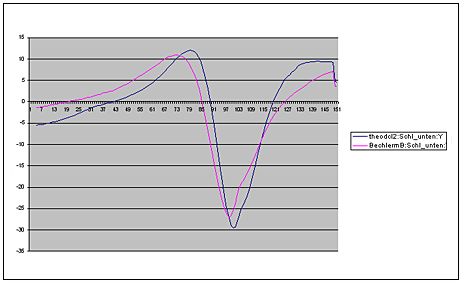
FACULTY OF SPORTS SCIENCE TECHNICAL UNIVERSITY, MUNICH, GERMANY Department Biomechanics and Applied Sports Sciences Initial Results: Clubhead speed in the direction of the target The diagram below compares the club head speed dynamics of a 67 year old amatuer player using the Carving Golf Technique and the coventional technique of a golf teaching professional swinging with reduced action. The two curves are virtually identical.
The findings of the Department of Sports Science during the study of the two techniques and with the practical applications of the Carving Golf School, shows that by using elements of both the classic fundamentals of the golf swing and the technique of the Carving Golf School, performance can be enhanced by the golf professional. However, for the beginning player or amateur, the technique of the Carving Golf School is sufficient for achieving a similar result of club head speed and swing dynamics, as compared to conventional methods. Munich, 27.02.2007/Bechler, Carvinggolf/Reetz ,TUM << Back to News |
|||
Imprint • Copyright
2006 © by Carving Golf |
